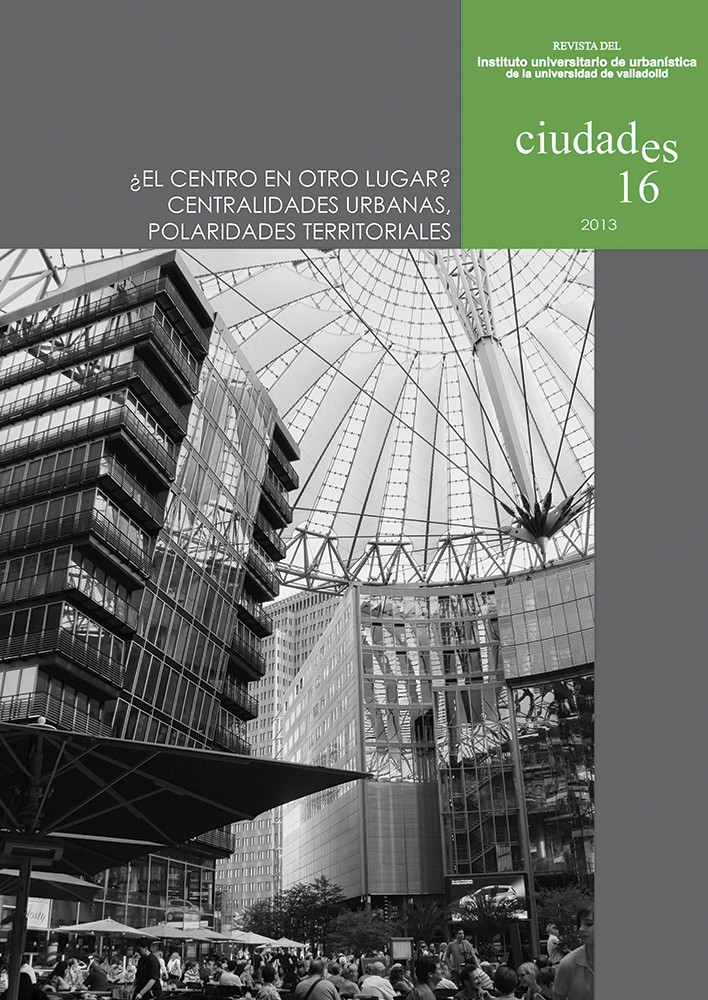During the tribute paid by the journal «Access» to its founder, Mel Webber, one of the giants of the 20th Century Urbanism, several colleagues insisted on his outstanding characteristic, the “optimistic skepticism”, an essential feature that allows Webber to keep its aspiration of basing planning on an objective knowledge, without putting out its exceptional view of the future. As Peter Hall states in this special issue of the journal, “Mel Webber believed in planning for the world as it actually was, working within the limits of the possible”. The concepts proposed by Webber in the sixties of the last Century, “Community without Propinquity” and “Nonplace Urban Realm”, not only anticipated the awareness of the fact that the nature and speed of new transportation and communication systems -transform human relationships, questioning the classic conception of place, but also inaugurated the need to redefine the concept of city itself in the area of urban studies. At the same time, North-American cities experienced a huge change during the sixties of the last Century, which was noticed perceptively by Webber, problems which haven’t been shorten out yet and which affect endless urban areas nowadays, arisen, beyond its diversity, the limits of what we’ve easily named as city. Nevertheless, as it seems that large areas of modern economy have perfectly understood Mel Webber’s thoughts as he re-focuses the interest of planning for the place towards the concept of connectivity, benefitting from the new reality, inequality and poverty still express themselves locally. It took Mel Webber a long time to be aware of how the denaturation of places due to new technologies would get into conflict with several attempts to recover them, both from an ecologic perspective, where the place strengthens as a resistance principle in defence of an urban model capable of a wider symbiosis with nature, and from the territorial cohesion defence which pursues, at least in intention, a greater social equity.
We take these premises as an introduction for this issue of “Ciudades”, devoted to the research on urban centrality. A concept –and a fact– modified by the accessibility which new systems of transport are now providing and, above all, by the accessibility generated by new technologies and their networks, communication systems increasingly capable and dynamic. It is this accessibility, anticipated by Webber, which has made possible an evolution towards the complex of urban centralities that we are able to identify on the territory and requires an in-depth analysis. Our journal, to a limited extent, aims at promoting a well-founded knowledge of the urban, close in motivations to Mel Webber’s optimistic and skeptic sense, always based on the analysis of reality. No advance can take place on urban planning without knowledge, and this one should be interdisciplinary. The explanation on the urban can’t be exclusively subject to morphological determinism or to the description of spatial configurations. Centrality constitutes a specific and dynamic urban phenomenon, and that’s why its analysis requires a contrast within several urban realities.
Accordingly, Paris and Scoppetta contributions help us to understand the meaning of centrality such as this one is being interpreted in modern city, from different points of view. Centers, nodes and poles… within a polycentric territory, play a key role in current urban theories. Paris has made an effort worthy of merit to establish a theoretical connection with the classics of urban and territorial centrality without giving up the contrast with the reality of Lombardy through a vigorous use of commerce –and its associations– as an indicator of territorial change. Several articles present interesting case studies, such as Cabrera’s, on the large area of influence of Granada; Ferrari’s, concerning peripheral micro-centralities emerged from Parisian villes nouvelles; Herrera’s, referent to the dual evolution of the metropolis of Caracas; Campos’ and Abarca’s, on the rich urban system of Andalusia, and, finally, Mendez’s and Ortega’s, regarding the Asturian “diffused city”. In all of them urban and territorial centralities find out specific explanations to the major transformation of our territories. In its contribution, Phd. Castello describes the state of the art on urban-architectonic culture. Although his singular tour doesn’t get away from reality, he presents us an interesting theory, which is based on the contrast between “center” and “place”. He reviews recent literature and addresses directly this issue’s challenge, the center in other place.
The articles altogether allow us to deal with the concept of centrality, concurrently with the explosion of concepts which, as stated in the call for papers of this issue, insist on renaming the urban with enthusiastic descriptions of more apparent emergent phenomena. However, they don’t provide a coherent explanation of our urbanized territories.
We have emphasized that the current urban, both in its complexity and banality, looks in a territorial scale like a big unfinished puzzle. The only order strategy seems to be chilled in the infrastructural nets, in their continuity and hierarchal basis. Each urban piece could be interpreted independently and related to particular circumstances: missing the thread of history and forgetting local geography. The concept “centrality”, both in its urban and territorial dimension, not only has been determining for urban theory, but also keeps playing a key role in the explanation of our urbanized territories. Just as we announced in the call for papers, there are still a lot of topics under discussion that aren’t resolved in this issue. Nevertheless, it constitutes a support for further progress in the field. Our proposal was to overcome this “art of the lost center”, which has abandoned the theory after the functionalism and only focuses on the most brilliant in each case. Towards the polycentric territory –potential product of the planning of city-region– it is possible to meet again the “power of place” –or rather power of places–. This power gets a more equilibrated and better-organized territory and allows to overcome the dual structure center-periphery. This would help us to recompose the pieces and give meaning to territory, without giving up the immersion into the noise of the most intense fluxes or avoiding the silently lethargy of the most vulnerable territories.
The issue is complemented by two contributions: the first one, appearing in Miscellanea, deals with a specific experience on local planning, and the other one, in Final Section, puts an eye on the perception of urban centrality. Finally, three reviews complete this edition of “Ciudades”.
We thank you for your interest reading our journal, and we encourage you to contrast and divulge your opinions, provoking discussion, in order to construct, altogether and gradually, a richer and in-depth urban knowledge.
Valladolid, March 2013

